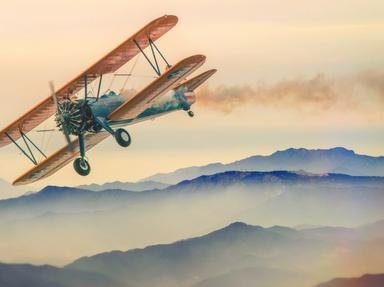Quiz Answer Key and Fun Facts
1. Although it is most commonly known as bird strike, any incident of our feathered friends impacting with an aeroplane can also be referred to by the appropriate acronym BASH. What does BASH stand for?
2. Bird strike is not confined to any one particular area of airspace, it can happen on the ground as well as in the skies, and anywhere in between. Studies have shown that the majority of bird strikes occur when the aeroplane is doing what?
3. Considered to be the biggest danger imposed by bird strike is avian ingestion. This term refers to when the bird enters which part of the aeroplane?
4. You might ask why, but workers at the Smithsonian Institute have given a name to the bloody remains collected from planes that have experienced bird strikes. So, what do they call it?
5. The need for an aeroplane that could withstand bird strike was realised in the 1950s by de Havilland Aircraft in England. What device did they come up with to help them test the strength of their aeroplanes?
6. The first known bird strike-related death in the aviation world occurred at Long Beach, California in 1912, just five months after the same pilot became the first person to fly coast to coast across the U.S. What was the name of the unfortunate pilot?
7. The single worst disaster in the twentieth century attributed to bird strike occurred at Boston, Massachusetts on the 4th of October, 1960, when Eastern Air Lines flight 375 crashed after suffering severe engine problems. Which small and unassuming bird was found to be responsible for causing this accident?
8. Good fortune smiled upon U.S. Airways flight 1549 on the 15th of January, 2009. After striking a flock of geese and losing power in both its engines, the pilot managed to land the aeroplane safely in which body of water?
9. They are more likely to be found on a farm than at an airport, but in 1999 Southwest Florida International Airport began using what to control bird populations within its boundaries?
10. I'm glad moose don't fly, because evidence has been found of aeroplanes being struck by cats and rabbits whilst they were in flight.
Source: Author
Aussiedrongo
This quiz was reviewed by FunTrivia editor
stedman before going online.
Any errors found in FunTrivia content are routinely corrected through our feedback system.

